Utires surveyed car owners to understand which tasks people are most likely to put off, how long they delay, and why they avoid repair shops
Chicago—In Utire’s latest survey of 1,200 car owners, 74.7 percent rated themselves “good” or “excellent” when asked how diligent they are about vehicle maintenance. Fewer than 4 percent rated themselves “pretty bad” or “terrible” at taking care of their vehicles.
This was the breakdown:

But when probed deeper, 91.8 percent of car owners admitted they’ve put off a car care task longer than they should. In many cases, the delays were less than a week long, but a number of drivers have gone 30 days or more with wheels out of alignment, slow leaks in their tires, whining brakes, and more.
Top 10 Most Ignored Problems

The most commonly ignored problem was a cracked windshield, with 42.4 percent of car owners admitting that they’ve waited 30 days or longer — watching as spidery cracks slowly spread — before repairing or replacing the glass.
About 1 in 3 drivers admitted postponing wheel alignments (35.3 percent) or oil changes (31 percent) for more than 30 days. More than a quarter of car owners admitted driving with bald or worn-out tires (27.3 percent), disregarding the check engine light (26.4 percent), or ignoring sluggish brakes (25.9 percent) for a month or longer.
Other items in the top 10 included overlooking a noise from the engine or wheels (24.4 percent), a slow leak in a tire (22.7 percent), an empty windshield fluid reservoir (21.9 percent), or a broken headlight (16.2 percent) for a month or more.
Top Reasons for Delaying Service and Repair

The biggest factors were being too busy (54.3 percent), being unable to afford it (52.2 percent), thinking the problem was not urgent (34 percent), the length of time the repair might take (29.3 percent), anxiety around car-related issues (17.8 percent), and distrust of mechanics (13.4 percent).
Anxiety and distrust of mechanics were slightly more of an issue for men than women:
- 18.4 percent of men said they delay car maintenance because of anxiety around automotive matters, compared with 16.9 percent of women.
- 14.3 percent of men said they distrust mechanics, compared with 11.8 percent of women.
Also, younger people feel more anxiety and distrust around automotive tasks than older people.
- 23.8 percent of people in their 20s said they have delayed repairs because of anxiety, compared with 8.9 percent of people in their 60s.
- 15.4 percent of car owners in their 20s said they distrust mechanics, compared with 12.7 percent of people in their 60s.
Cost of Delayed Maintenance

Many people would struggle to pay that amount if it happened in a single event. The survey found that once the cost of a repair crosses the $1,000 threshold, fewer than half of American car owners can pull together enough money to get their car fixed.
Ability to Afford a Repair Depending on Financial Situation

Top 10 Most Ignored Problems and Cost Consequences
Cracked Windshields
The survey found that windshield cracks were by far the most neglected car maintenance issue, with 26.7 percent of drivers admitting having ignored one for more than three months.

Chips and spidery fractures caused by road debris are more than a cosmetic problem. As they spread, they can limit visibility and weaken the structural integrity, putting a repair customer at much greater risk of injury during a collision or rollover accident.
How much it can cost
Ignoring a chip or crack may lead to needing replacement of an entire windshield — which is 3 to 4 times more expensive.

Not replacing a windshield and getting into an accident
- In a front-end collision, cars are designed to absorb impact with crumple zones. As the force moves to the passenger compartment, the curve of the windshield is supposed to reinforce the frame, enable the airbags to function properly, and prevent the windshield from collapsing in on the passengers and the A-pillars from folding inward.
- In a rollover accident, the strength of the windshield helps to absorb some of the impact and prevent catastrophic roof collapse as well as the injuries that could ensue.
- If poor visibility via defective windshield was a factor in the accident, the driver could be found negligent and liable for damages.
Driving with Wheel Out of Alignment
The second most-neglected car maintenance task was getting wheels aligned. One in eight car owners (12.5 percent) has driven for more than three months with a misaligned axle.

Most car owners surveyed dealt with poor alignment within 15 to 30 days. One in five car owners (22.2 percent) let it slide for two months or longer.
Delaying wheel alignment can require needing new tires, shock and struts — which is 14 to 18 times more expensive.

Neglecting Regular Oil Changes
The biggest group of car owners (38.3 percent) reported waiting 7 to 30 days past the recommended time to change their oil. Almost a third (31 percent) delayed by more than a month.

Delaying an oil change can be 50 times more expensive due to replacing engine parts.

Letting Car Tires Get Bald or Worn Out
There are two common reactions when car owners discover this problem. One group replaces the tires within 24 hours (18.2 percent). The other group waits about three weeks (16.7 percent), rolling the dice that they won’t have a blowout or lose control of their car. A small contingent (8.3 percent) keeps driving on bald tires for three months or longer.

Ignored worn tires and they fail while driving can damage the wheels and rotors. The average cost for wheel replacement is between $698 and $710. Wheel hub assembly replacement runs between $475 and $504.
Not replacing tires promptly can cost 13 times more.

Ignoring the “Check Engine” Light
A full 15 percent of U.S. drivers admit disregarding a dashboard warning for more than 3 months.

One common problem that accounts for up to 10 percent of all check engine messages is a faulty oxygen sensor. Replacing an oxygen sensor right away costs about $350.

Responding Slowly to Sluggish Brakes
About a third of car owners (32.4 percent) spring into action when they notice a brake problem and get it fixed within three days. But a sizeable group (25.9 percent) lets the situation linger for a month or more.
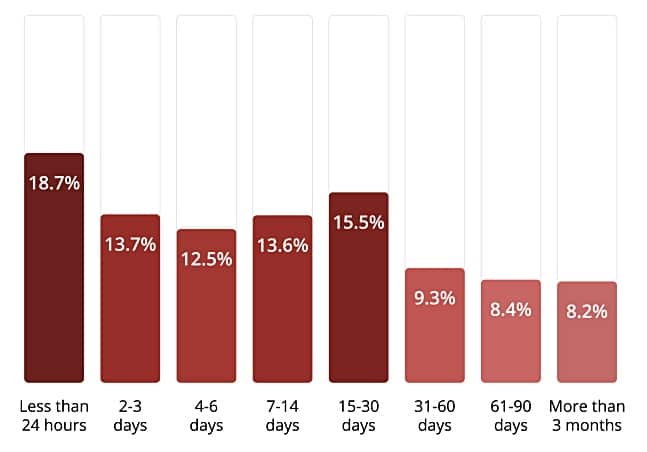
Failing to replace brake pads promptly can lead to having to replace discs, rotors, calipers, and fluid, costing between $300 and $800 per axle on average, but can easily climb above $1,000 depending on the make and model of the car — five times more expensive.
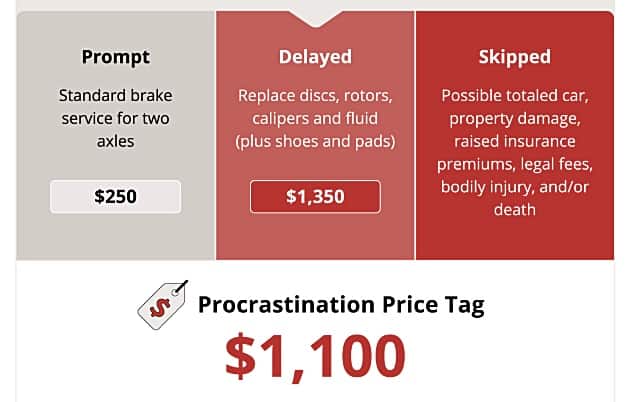
Squeaks, Rattles, and Groans: Ignoring Unusual Car Noises
Most people take it seriously when their vehicle starts making weird or alarming noises, with 41.5 percent getting it into a mechanic within three days. However, nearly a quarter of car owners (24.4 percent) have ignored car noises for a month or longer.
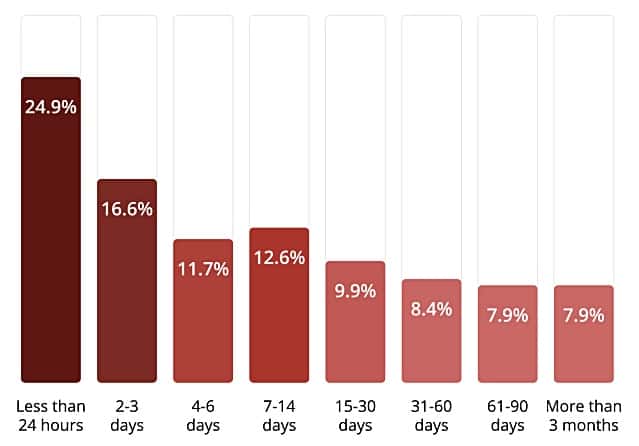
Timing belts — a common cause of noise — are often replaced as part of scheduled maintenance every 80,000 to 100,000 miles. Having a timing belt replaced before it breaks typically costs between $576 and $659. Not doing so can cost 3 to 4 times more expensive.
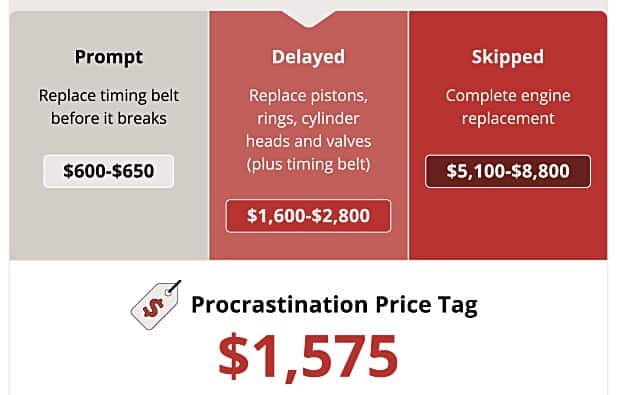
Driving With a Slow Leak In a Tire
Although 40.3 percent of car owners fix leaky tires within three days, more than half use temporary fixes like adding more air to delay having to patch or replace them. Not doing so can be 8 to 10 times more expensive.
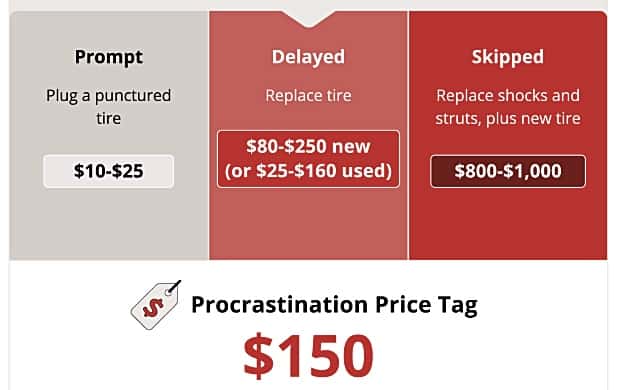
Running Out of Windshield Washer Fluid
Low visibility conditions are blamed for 38,700 vehicle crashes, 16,300 injuries, and 600 deaths each year, according to the U.S. Department of Transportation.
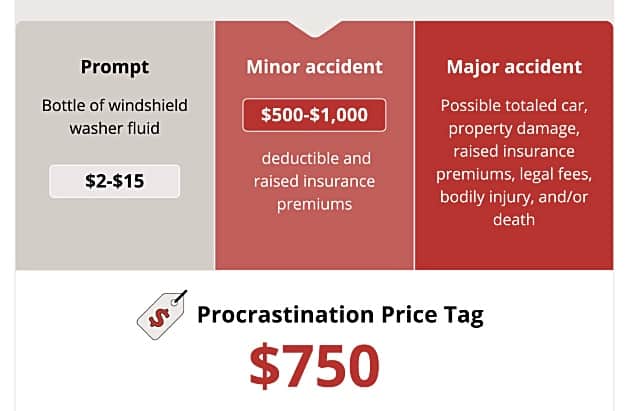
Driving with a Burned-Out Headlight
Most states have laws requiring headlight use from sunset to sunrise for the simple reason that it’s safer.
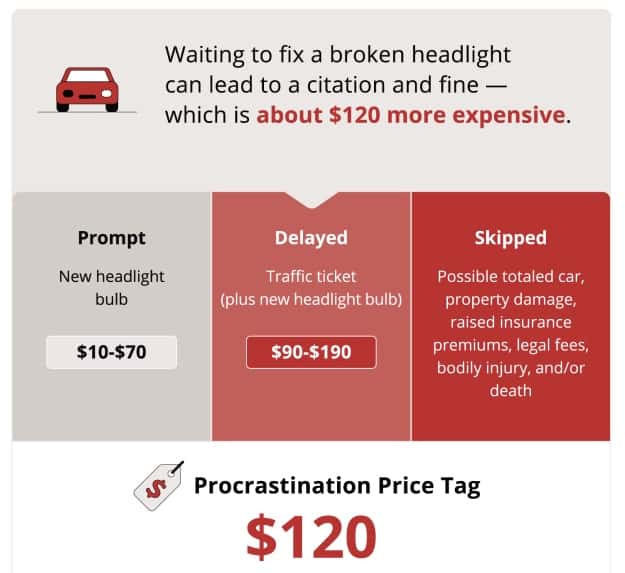
View the full Utire report is here.


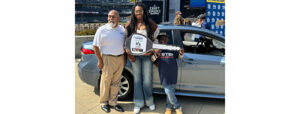



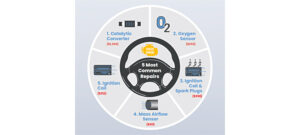
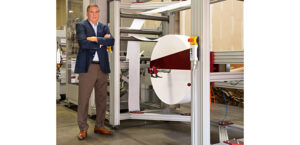

Comments are closed.